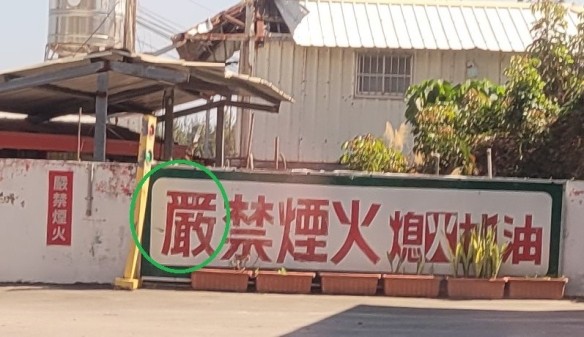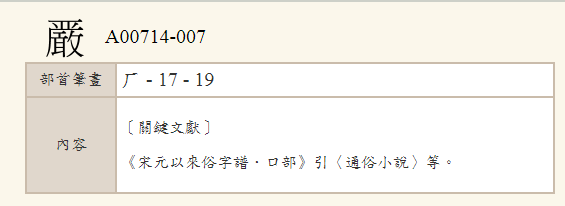I’m always interested to see how variants of standard Chinese characters are still used in everyday life, whether it’s handwriting, signs or an author making a stylistic choice.
I spotted this beauty at a petrol station in Taitung. You can understand the reason for the simplification of the top of the character given the chunky font required by this kind of paint:

This character is 「嚴」(yán/strictly), but the top has been simplified along the same lines as the simplified version of the character 「严」. It retains the 「敢」 of the traditional character though:

You can look up these kinds of variants in the variant dictionary here.
Funnily enough there is a standard 「嚴」 on the sign to the left of the one circled.
Have you ever caught a p̶o̶k̶e̶m̶o̶n̶ Chinese character variant in the wild? Submissions welcome!

I used to walk past a restaurant in Hong Kong that used a wonderful variant of 留 that I’d never seen before nor seen since.
Source: https://goo.gl/maps/8LiJPk1SCQHRX5rN9
That’s a cool one. It’s in the variant dictionary here: https://dict.variants.moe.edu.tw/variants/rbt/word_attribute.rbt?quote_code=QTAyNjQ1LTAwMw
I have an uncompleted project that does a Google Translate style textbox -> textbox for converting a set of Chinese characters into their more obscure variants. I was sourcing the Unihan and MDBG CEdict exports; but of course the MOE has a variant dictionary too.
I wonder if they have a unicode dump available…
Sounds like a fun project, hope you find a way to get it done!